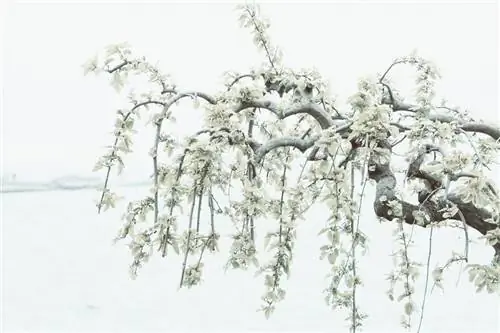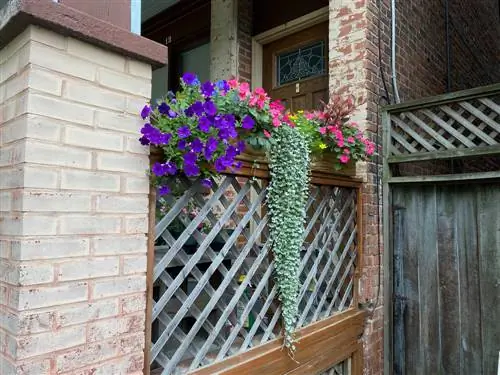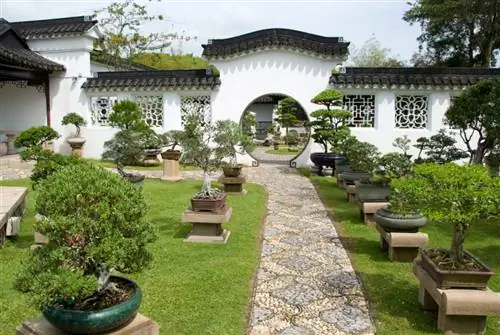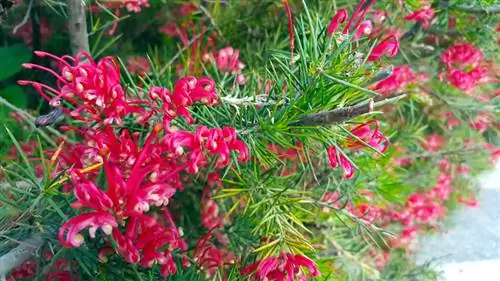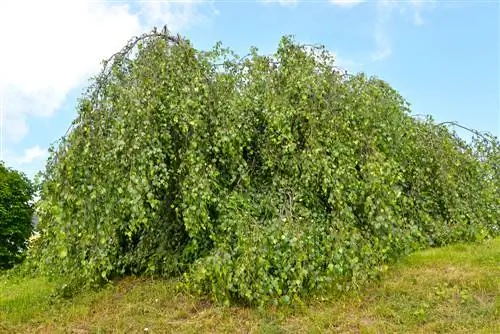- Author admin [email protected].
- Public 2023-12-16 16:46.
- Last modified 2025-01-23 11:20.
The native silver birch (Betula pendula) is rarely found among bonsai enthusiasts. This is by no means because the deciduous tree is so boring. No, quite the opposite, because the birch, which is extremely easy to care for and grow, is difficult to cultivate in planters and can behave quite capricious under such conditions. If you try it anyway, you can be rewarded with an impressive bonsai if you take good care of it.
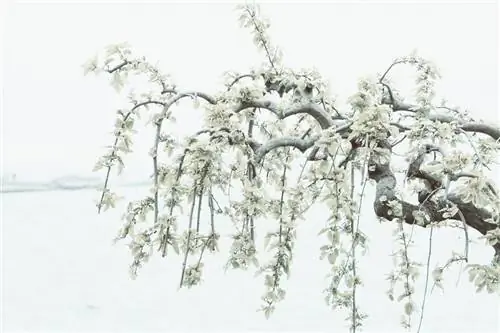
How do you care for a silver birch bonsai?
A silver birch bonsai needs a bright, sunny location and regular watering to avoid drying out. In winter it should be left outside over the winter and repotted every year. Cutting and wiring must be done with care to avoid damaging the tree.
Location
Wedding birches love a bright, sunny location where they are exposed to wind and weather. Too much shade leads to poor growth, and the lack of light can cause branches to die.
Design options
Birch trees are quite limited in terms of design options because, on the one hand, they are difficult to prune and, on the other hand, they quickly shed twigs and branches. Ergo, the bonsai artist must have patience and allow the design to be dictated more or less by the natural growth form of the tree. Silver birches can be cultivated both as individual bonsai and in groups.
Watering and fertilizing
Wedding birch trees need a lot of water and must not dry out, especially in midsummer - otherwise individual branches will die very quickly. However, waterlogging is also not tolerated, which is why you should ensure good drainage. Fertilization is preferably carried out between March and September with organic fertilizer.
Cutting and wiring
Do not cut your silver birch bonsai in spring or summer - the sap pressure is simply too great during the growing season and the tree is in danger of bleeding to death. Ideally, birch trees are pruned between November and January, although wounds must always be treated with a wound closure agent (€26.00 on Amazon) due to the high risk of infection. In principle, wiring is possible, but because of the very rapid growth, you cannot leave the wires on the tree for so long and have to replace them more frequently.
Repotting
Also due to its rapid growth, we recommend repotting the silver birch annually, which is best done in autumn or early spring.
Wintering
Since the silver birch is very frost-hardy as a native tree, it can also overwinter outdoors as a bonsai. To do this, it is best to bury the tree together with the planting bowl in the ground so that the roots do not freeze in very low temperatures.
Tip
A mixture of humus soil, peat, lava granules and akadama, a special clay granulate, is suitable as a plant substrate.

